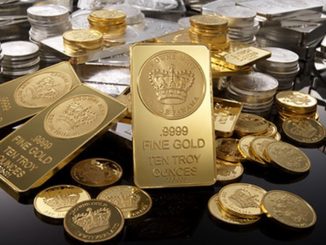As well as buying precious metals for their intrinsic value there are many people who collect coins, bars and other items and pay far more than their value in weight because of a perceived value based on scarcity or other factors.
Collectors will often have a particular type of coin (or bar etc) they are after based on a series, a theme or other factors. For example, many collectors buy sovereigns and focus on the rarer examples where there were low mintages or very few examples which exist in top condition. The list of possibilities is almost endless and personally I believe the hardest part of starting a collection is deciding exactly what it is that you are going to focus on. Without a firm plan it’s very easy to buy random items which don’t make ‘sense’ as a group. I’ve been guilty of this myself and it was only after I had worked out exactly what I wanted in my collection that I was able to limit purchases to those items which met the criteria I was interested in.
Shortly after deciding what my collection would consist of, I came across examples which were graded based upon their condition. It is obvious that the better the condition a coin is in the more collectable and valuable it will be. I was also aware that there was a way of grading coins based on their condition but I was not aware of how more complex this grading has become since the mid 1980s and how much this affects the perceived value of a coin.
Some years ago the UK adopted their own system for grading coins which range (best to worst) from:
- Uncirculated
- Extremely Fine
- Very Fine
- Fine
Within each of the categories above there are 3 subcategories, giving a degree of granularity to the grade a coin is allocated.
In the United States they decide to take things further and created a system to grade coins with a greater level of granularity. Companies which carry out these grading services also mount the coin in a sealed plastic holder which protects it from any potential damage in the future, including fingerprints and minute scratches. There are two companies which dominate the market, Numismatic Guaranty Company (NGC) and Professional Coin Grading Service (PCGS). Both companies grade coins using the same scoring process and therefore a coin graded by NGC would in theory achieve the same grade by PCGS.
The grading process is a manual one, with at least two professional numismatists examining every coin. To maintain impartiality, coin graders cannot be involved in the commercial buying and selling of coins. Each coin is examined by one coin grader at a time, who enters the coin grade into the system. Coins are examined using magnifiers at different levels to determine the grade.
The grading system grades coins within two main categories; Proof coins are given a “PF” prefix with all other coins given a prefix as per the table below. The grade score allocated to a coin ranges from 1 to 70, therefore a Proof coin with the highest score is given a grade of PF70. Uncirculated coins (coins not struck to proof quality) would have a top grade of MS70 (MS meaning Mint State” in this context). The lower to score the less desirable a coin becomes and the difference between a PF69 and a PF70 coin can sometimes run to hundreds of pounds, even though the human eye would be unable to distinguish between the two coins.
Coin Grading Classifications
| Grade | Coin Classification |
| MS60 – MS70 | Uncirculated |
| AU 50, 53, 55, 58 | About Uncirculated |
| XF 40, 45 | Extremely Fine |
| VF 20, 25, 30, 35 | Very Fine |
| F 12, 15 | Fine |
| VG 8, 10 | Very Good |
| G 4, 6 | Good |
| AG 3 | About Good |
| FA 2 | Fair |
| PR 1 | Poor |
In addition to these grades, coins can also be given designations such as “PL” which means Proof Like (where an Uncirculated coin is minted with an almost Proof like quality). For a full explanation of the grading process and the grades and designations please see here – https://www.ngccoin.com/coin-grading/grading-process/ngc-grading-process.aspx
In the UK there are a number of companies who work with both NGC and PCGS to get coins graded and I have used one of them for a number of my own coins. The process is simple enough, I send the company the coin with a form completed stating what services I want the grading company to carry out (such as cleaning before grading). This company send the coin to the grading company’s office in the UK and it is sent across to the US where the coin is graded, inserted into the coin holder and eventually returned to the UK some 6 to 8 weeks later. The cost of this process is dependent on the value any type of coin being graded but it can cost as little as £25 per coin.
There are several benefits in get coins graded, including protecting the coin in its holder, confirmation the coin is real and that it has reached a certain grade. Coins achieving the highest scores will (in theory) be worth more than lower graded or ungraded coins.
There are some downsides to grading. It can be costly to have coins graded and if your coin is not given a grade as high as you expected, it can mean it is worth less when you eventually come to sell it on. Also, the coin is held in a plastic slab which not everyone likes. Personally, I like coins to be slabbed as it protects them against any damage, but it does come down to personal choice.
My Own Collection
I decided my collection would be limited to gold sovereigns and specifically coins which fall into one of the following categories: –
- “Struck on the Day” (SOTD) and / or
- Plain edge (rather than a milled edge which is far more common) and / or
- Have a Matte finish
Since about 2017 the Royal Mint have issued SOTD coins to celebrate major milestones such as the 200th anniversary of the sovereign, 75th anniversary of VE and VJ day. These coins usually have a maximum limit of between 500 and 650 coins, making them reasonably scare. By the time coins are graded the number given the very highest score can be significantly less than the number minted. The sovereign produced in 2017 had a design based on the original design used in 1817, with all other examples conforming to the usual George and Dragon design, with the addition of a unique ‘privy’ mark to differentiate it from a standard sovereign.
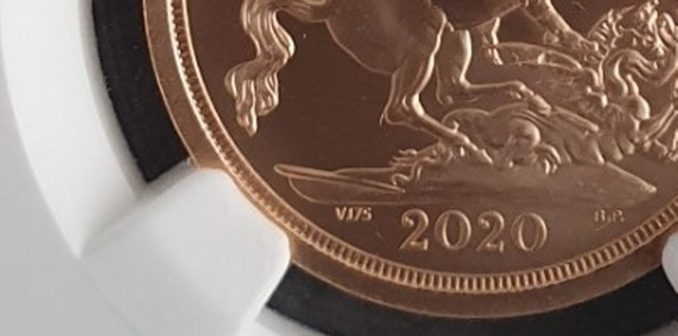
The very first SOTD sovereign I collected was minted on the day the UK left the EU and for obvious reasons it’s one of my favourites.
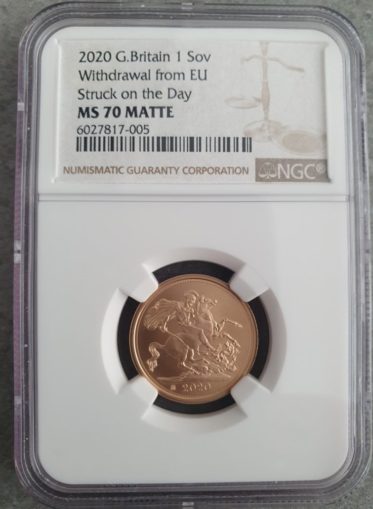
So far, I’ve collected all the ones produced by the Royal Mint in modern times. There are plain edge sovereigns from 1937 which I’ve yet to secure, however these are pretty rare and even harder to obtain with a high grade. My most recent SOTD coin was produced in April this year, celebrating the Queen’s 95th birthday and is currently being graded by NGC.
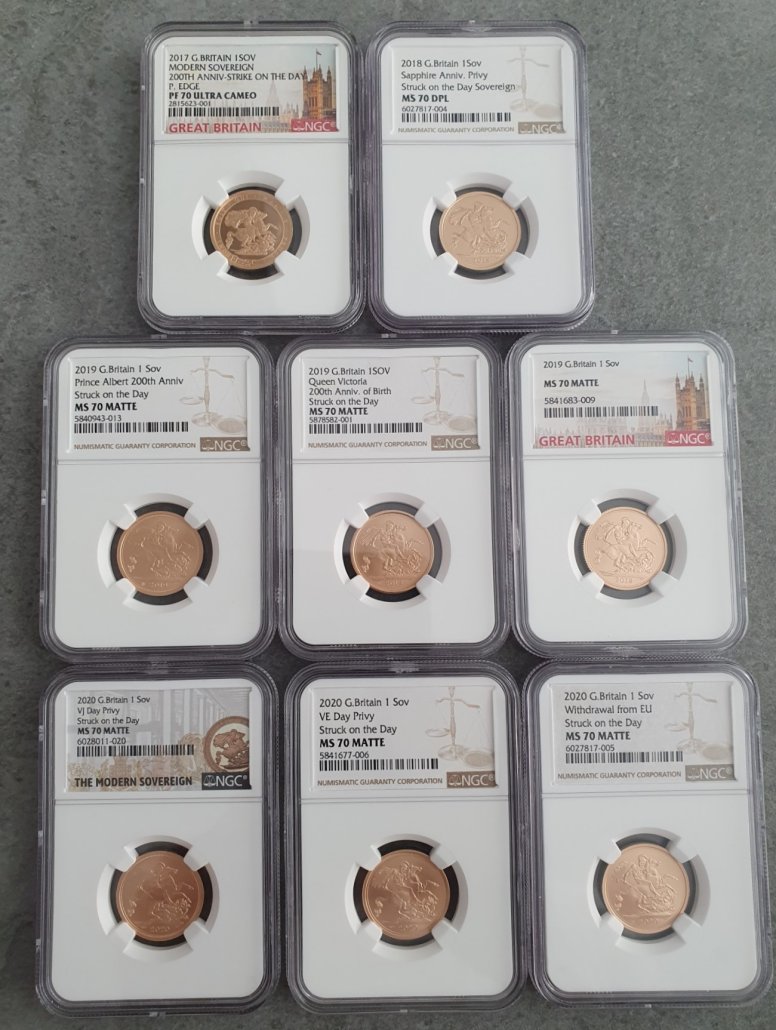
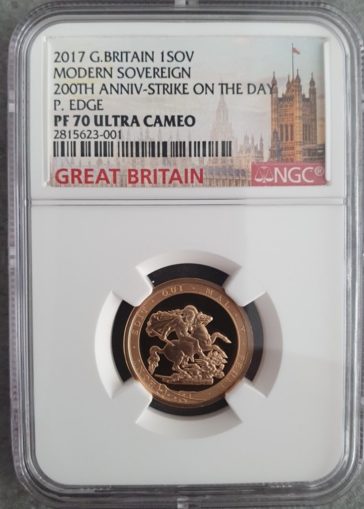
Thank you for reading and I hope you found this article interesting.
© Reggie

